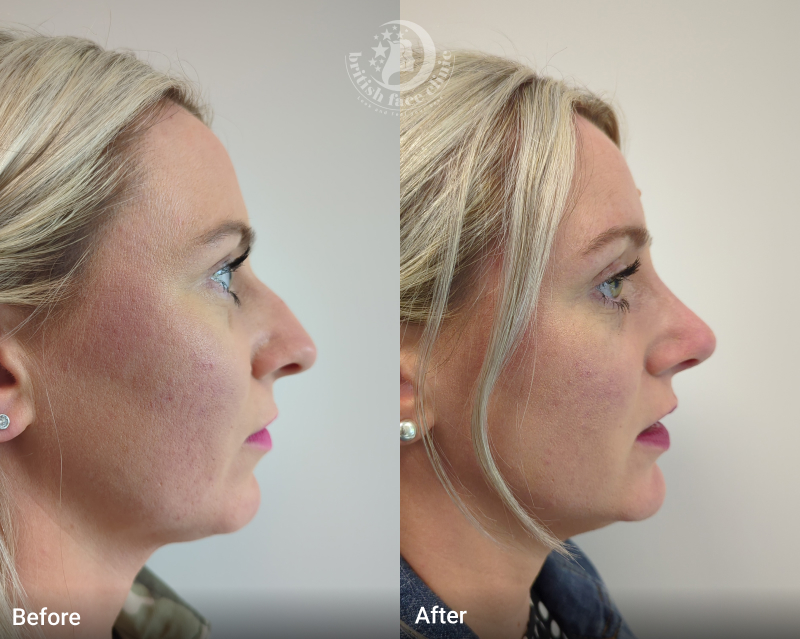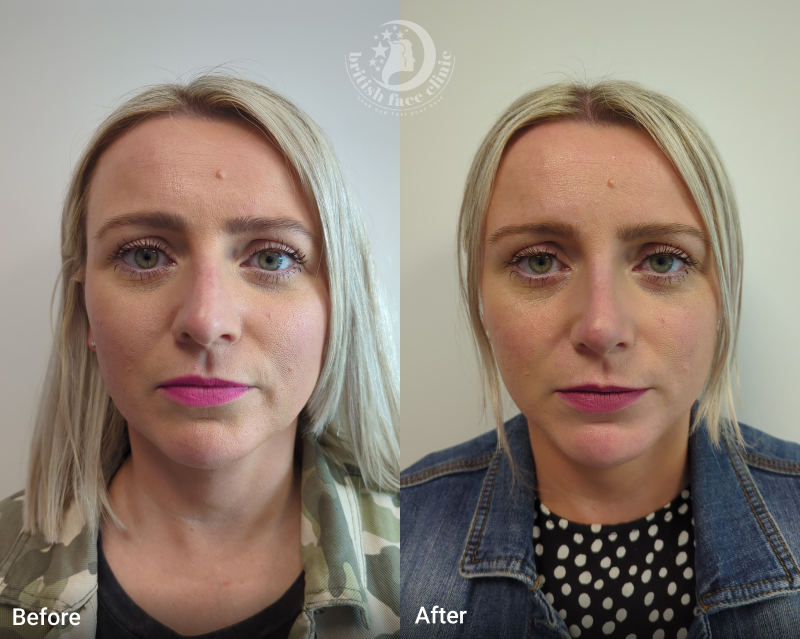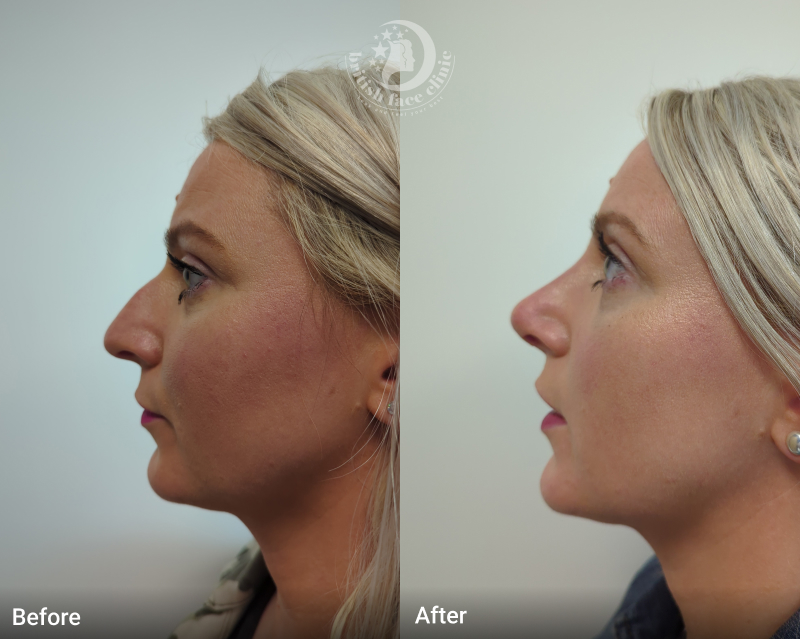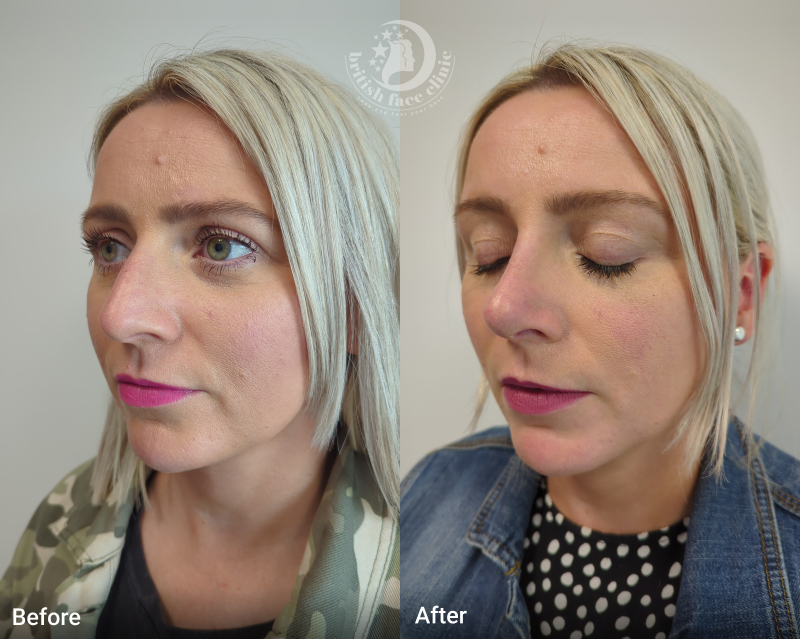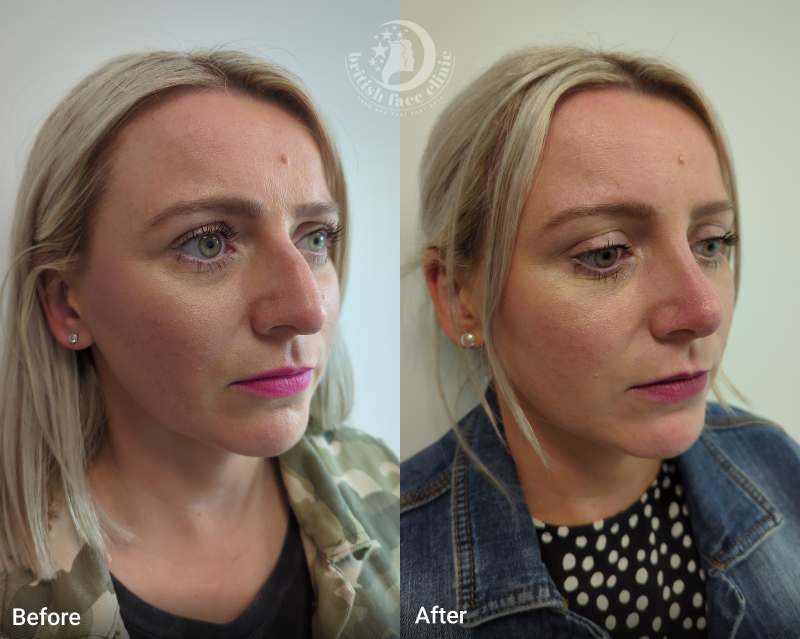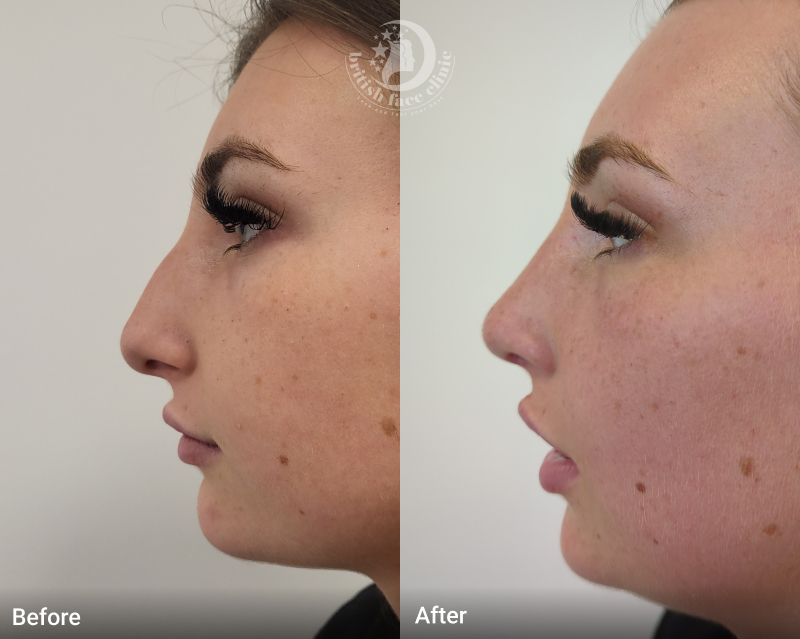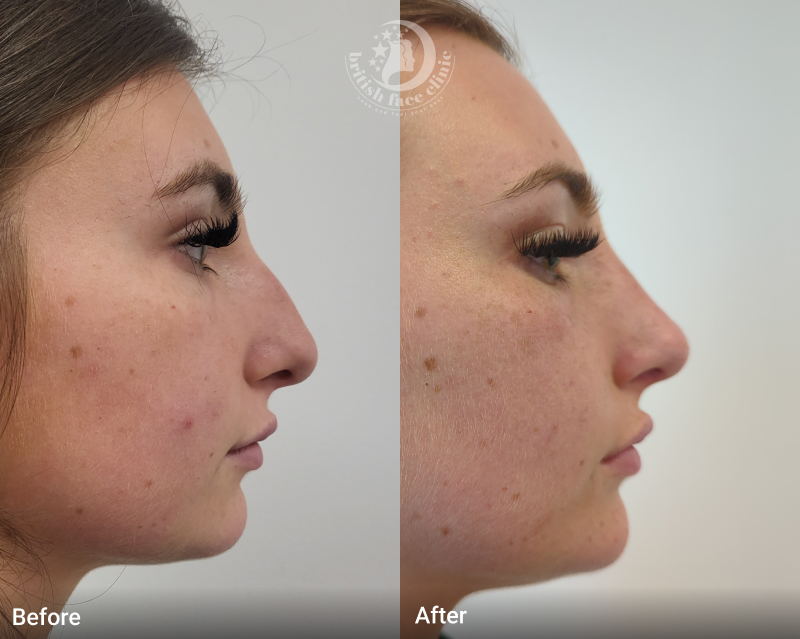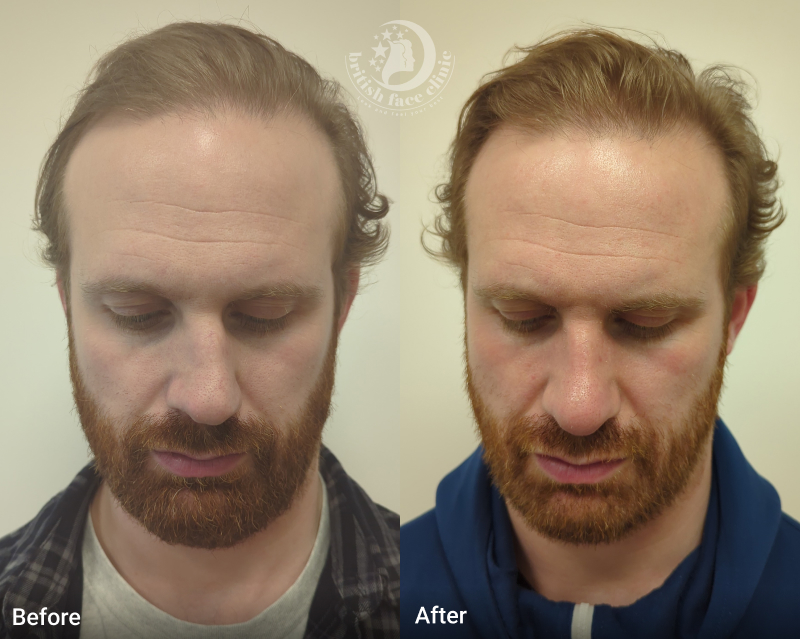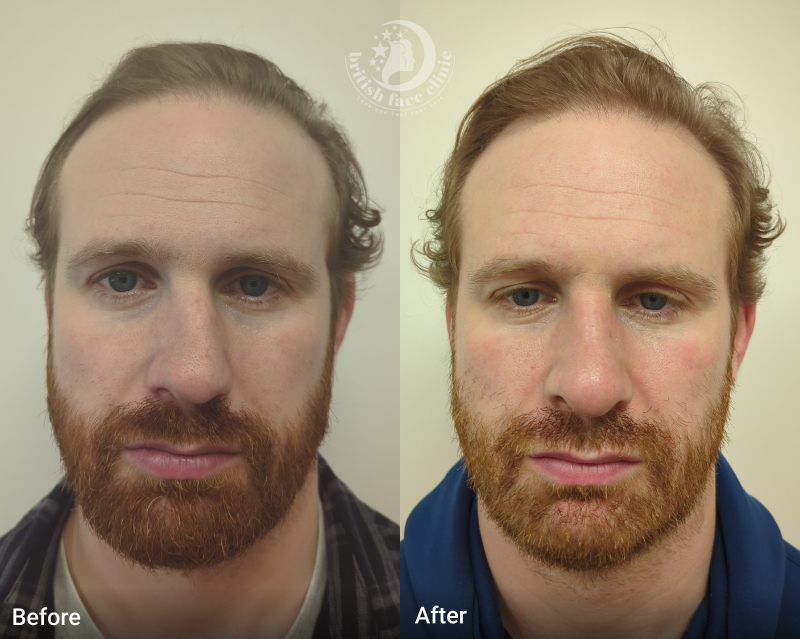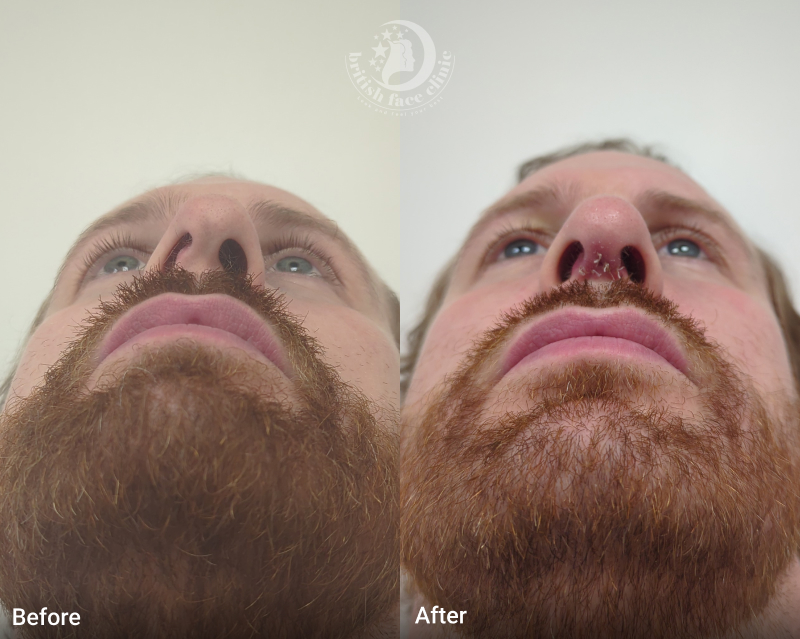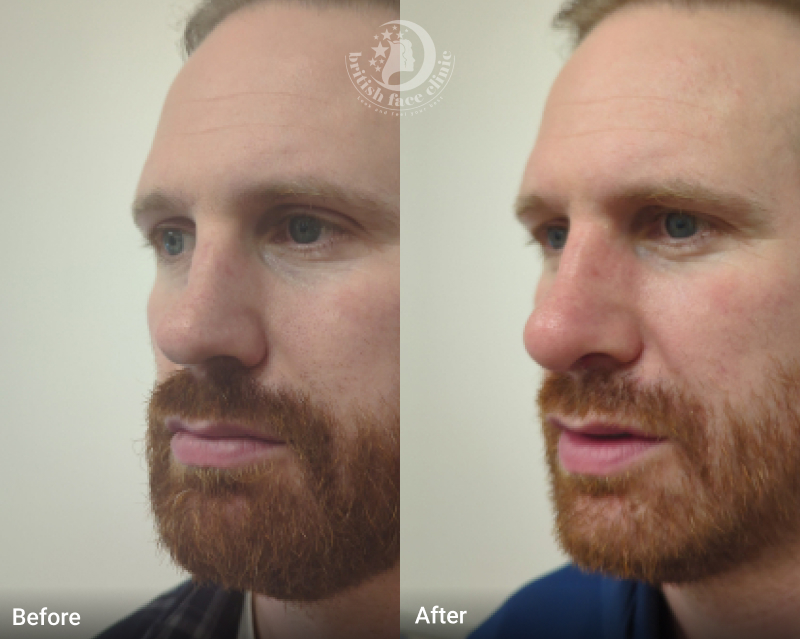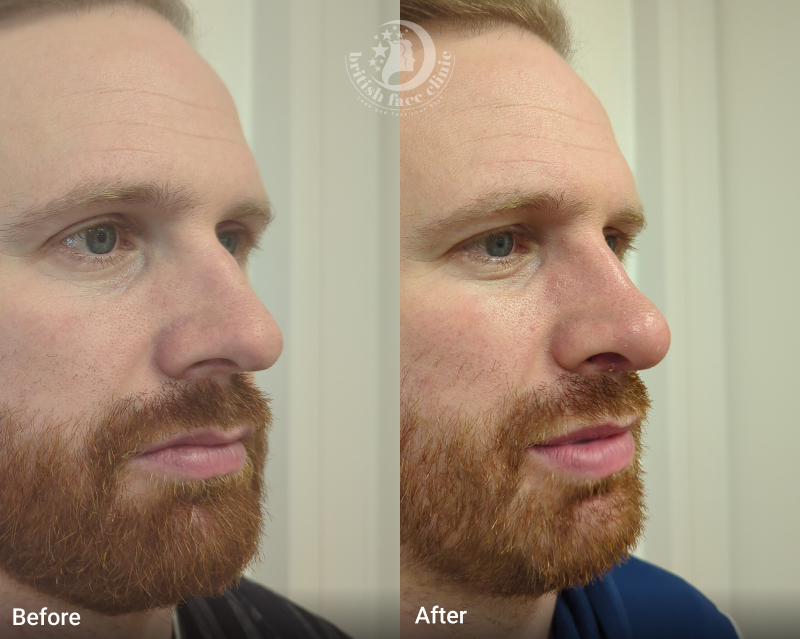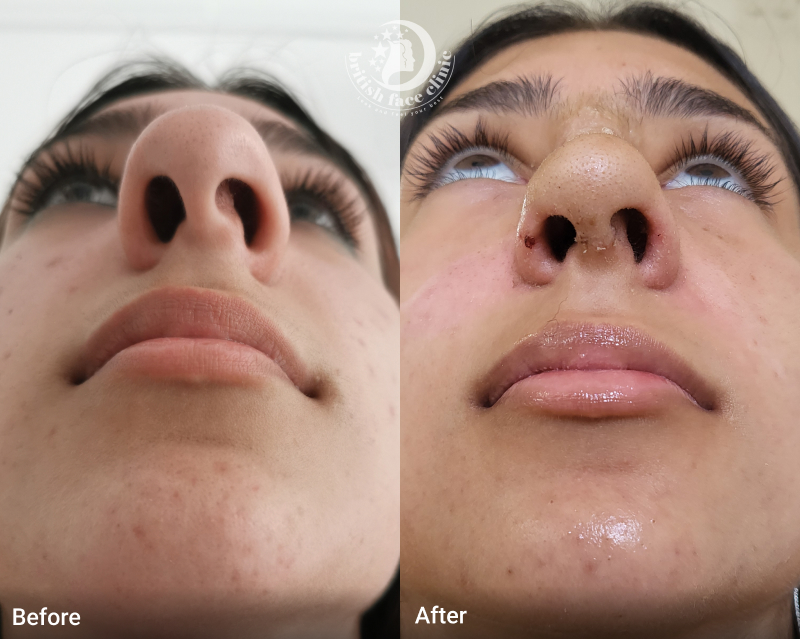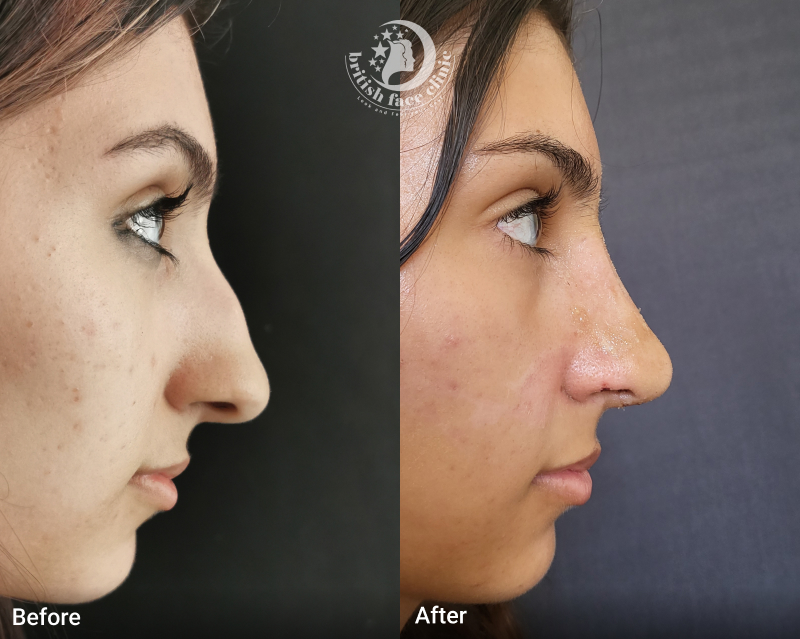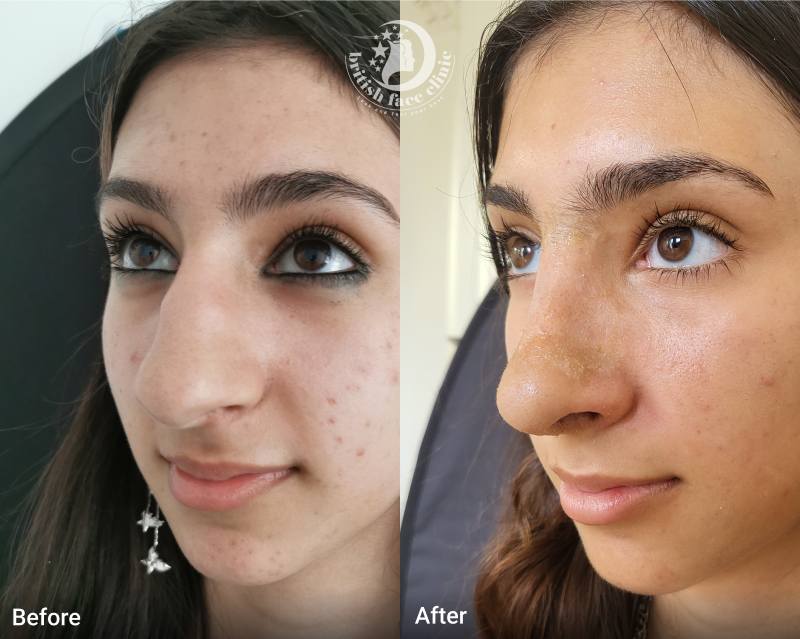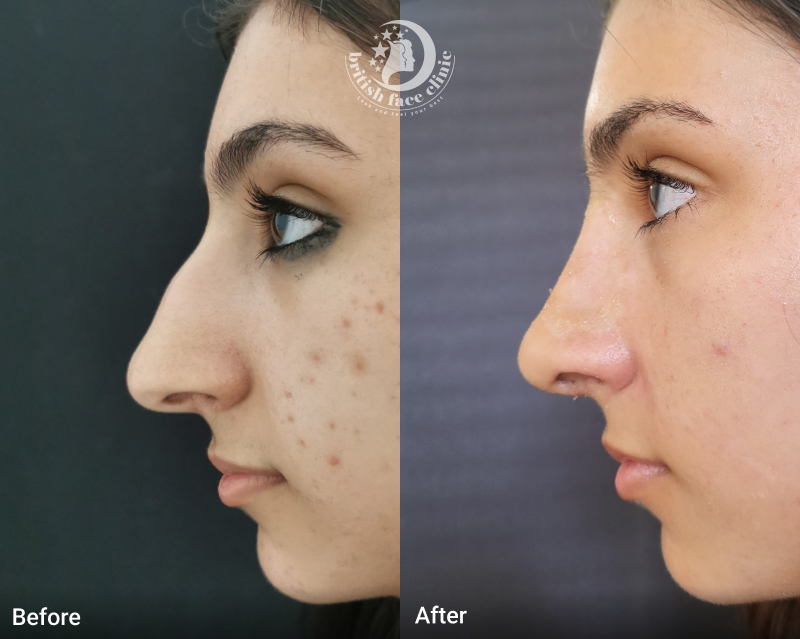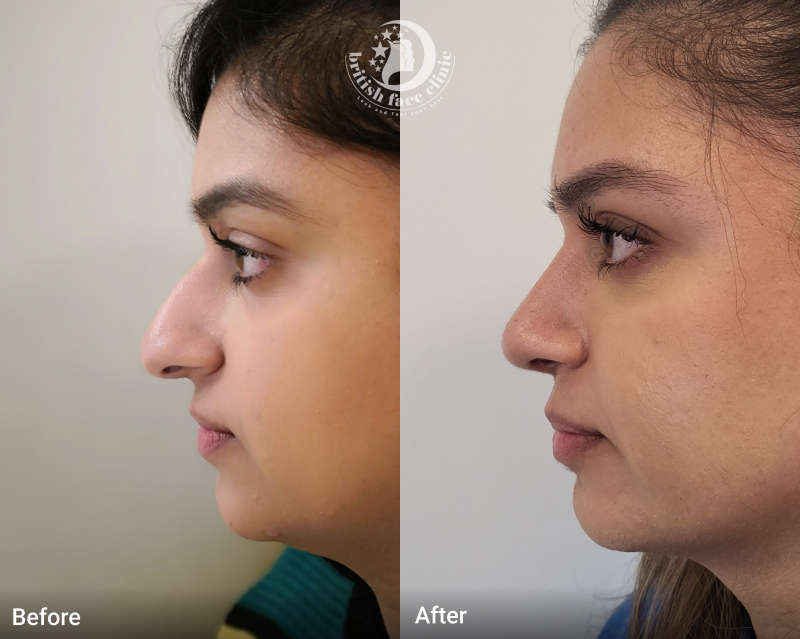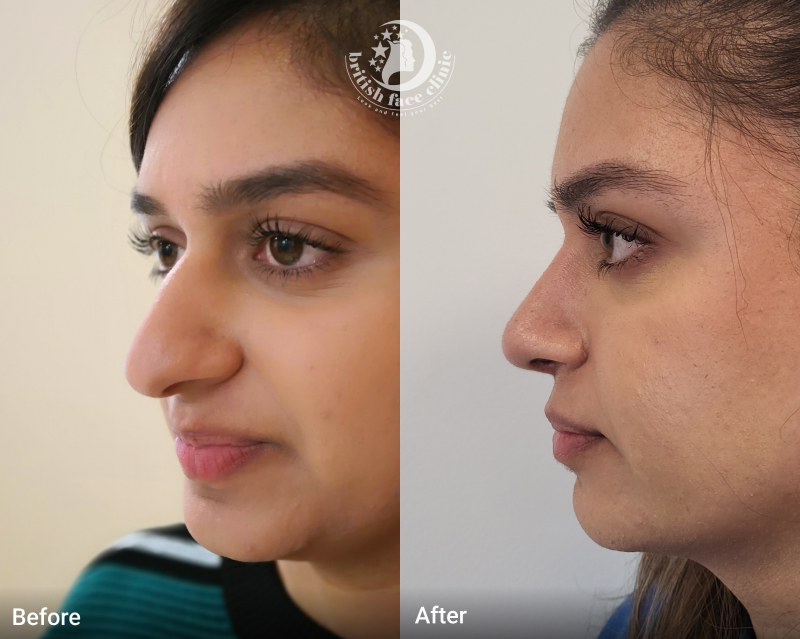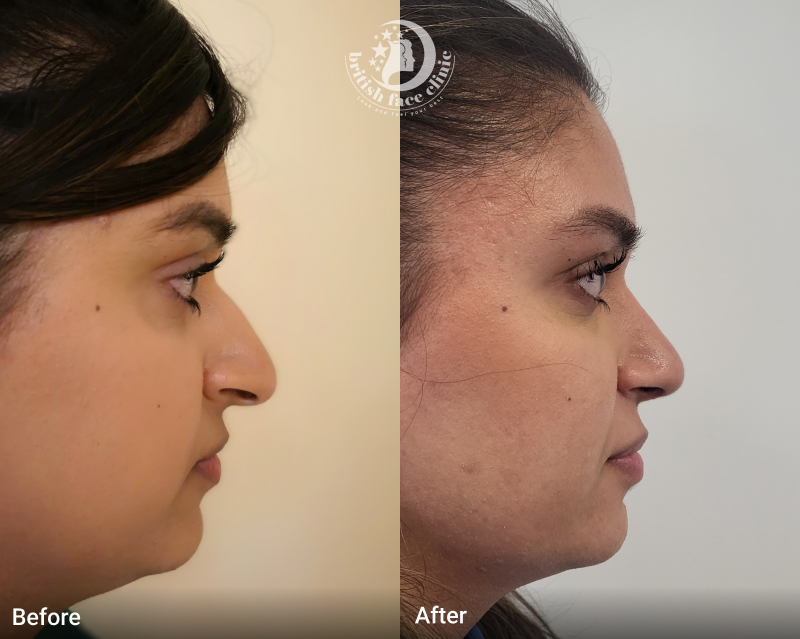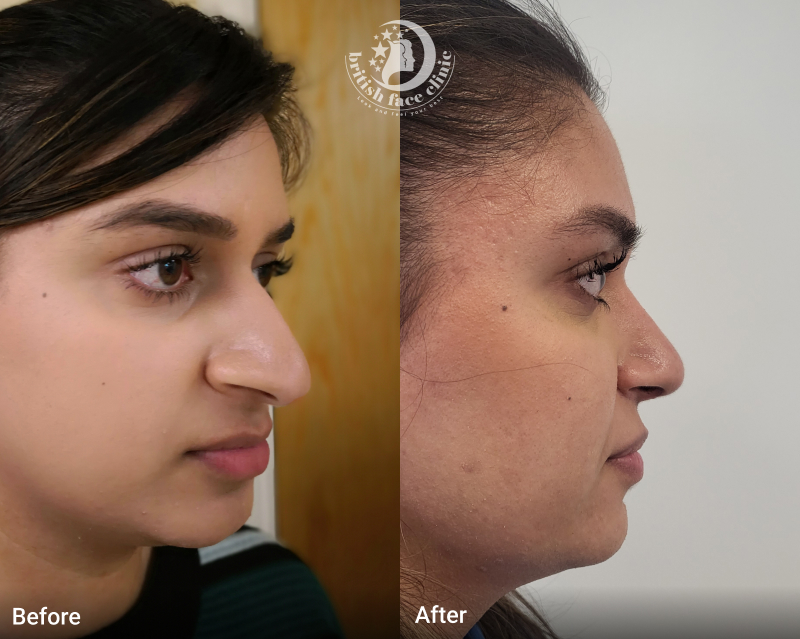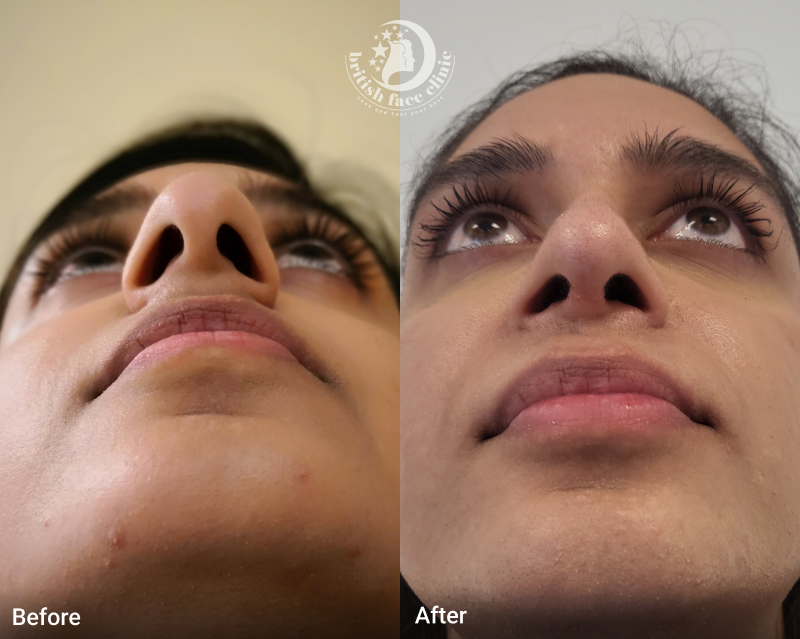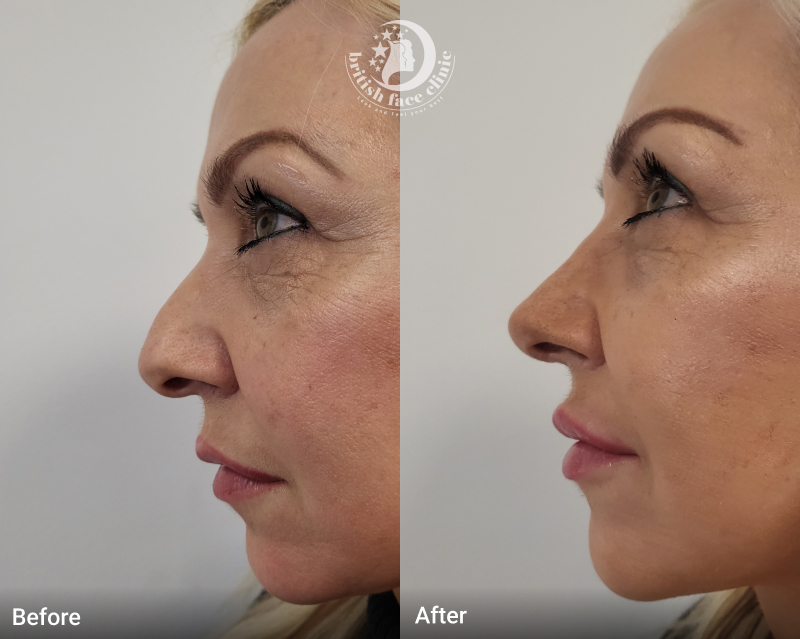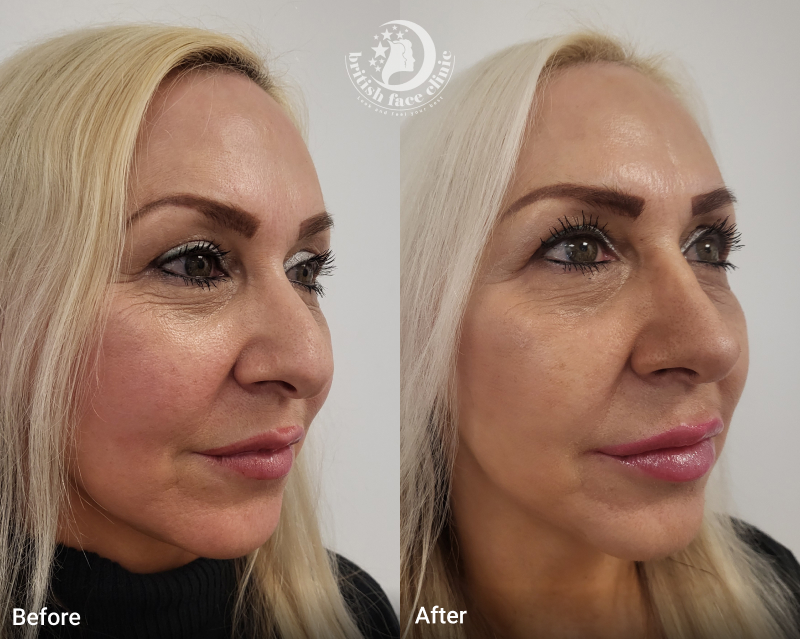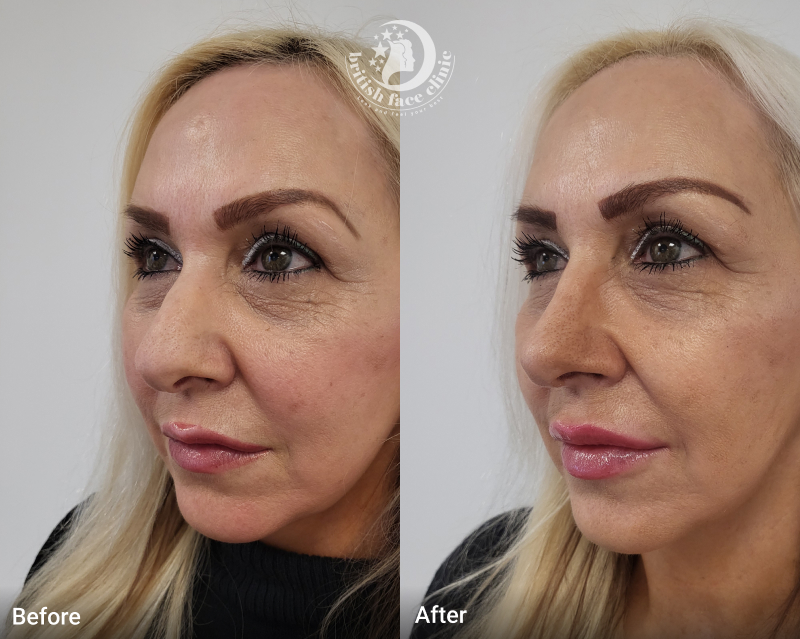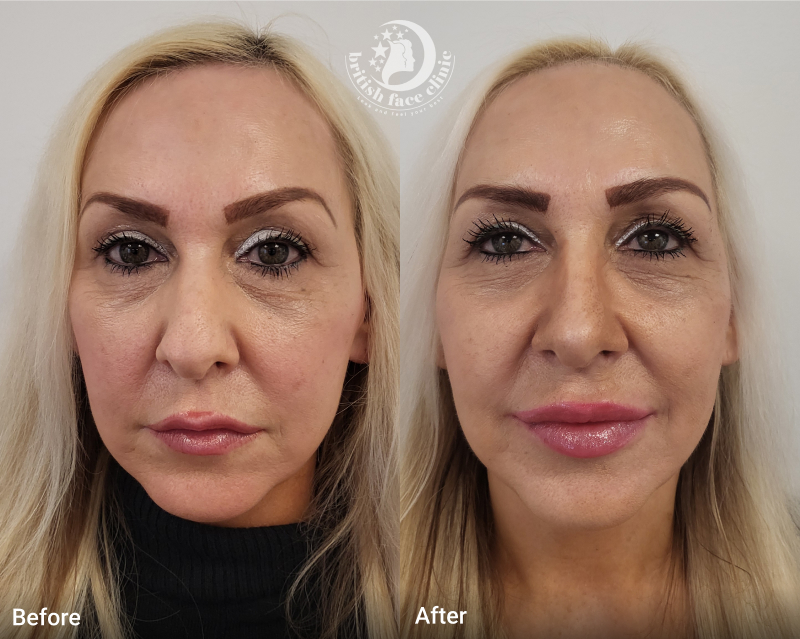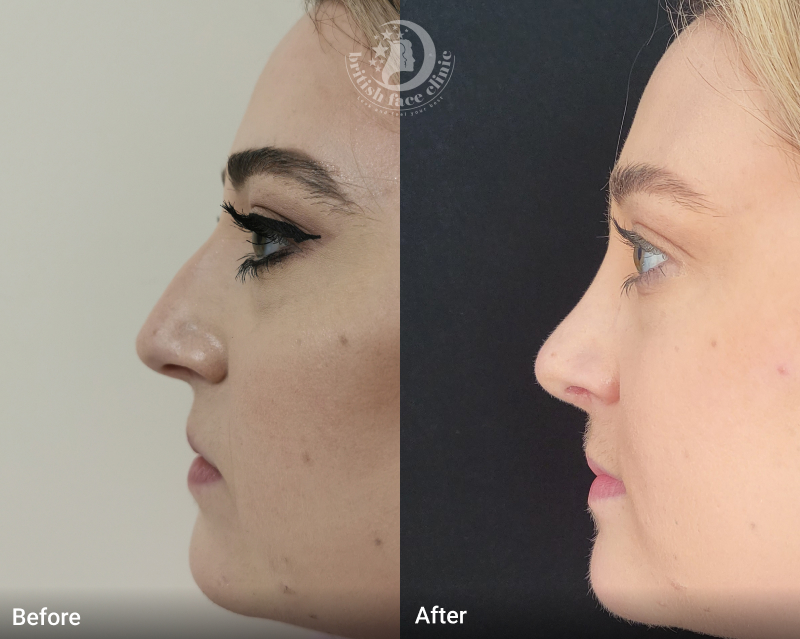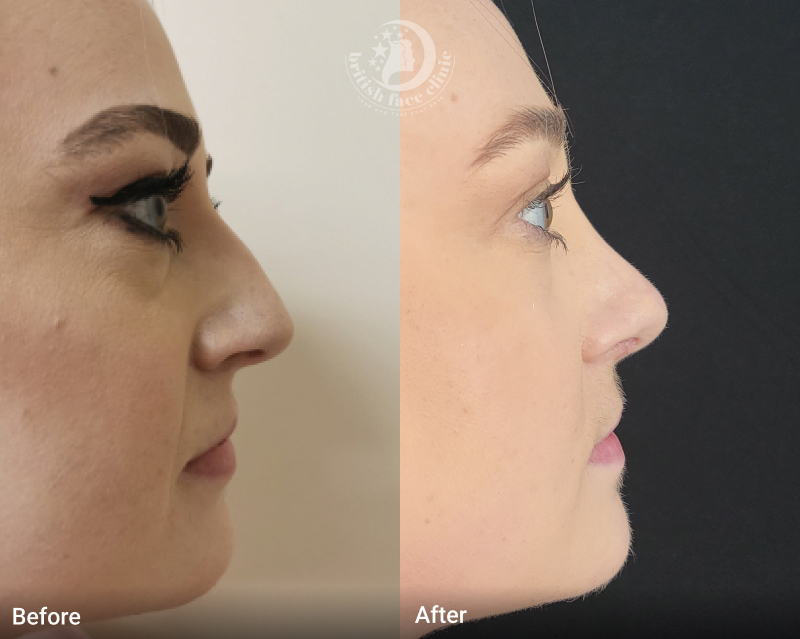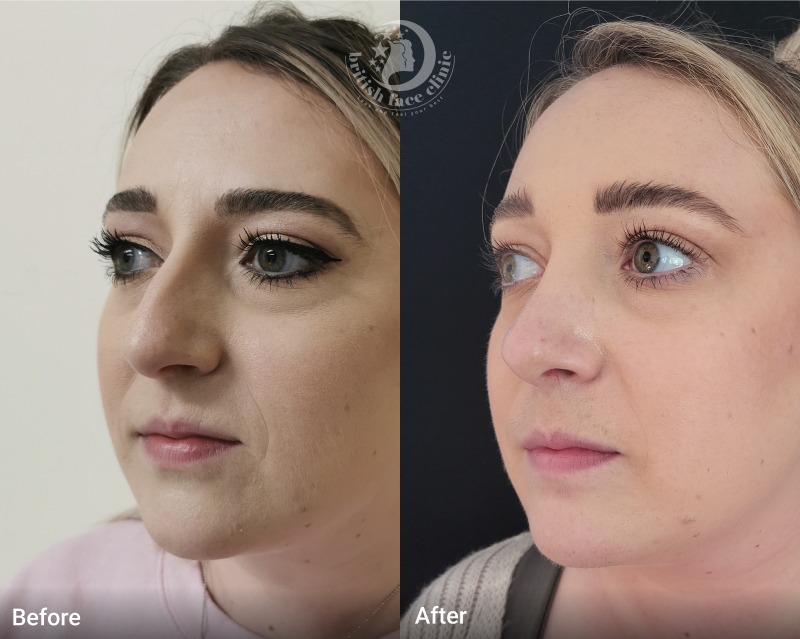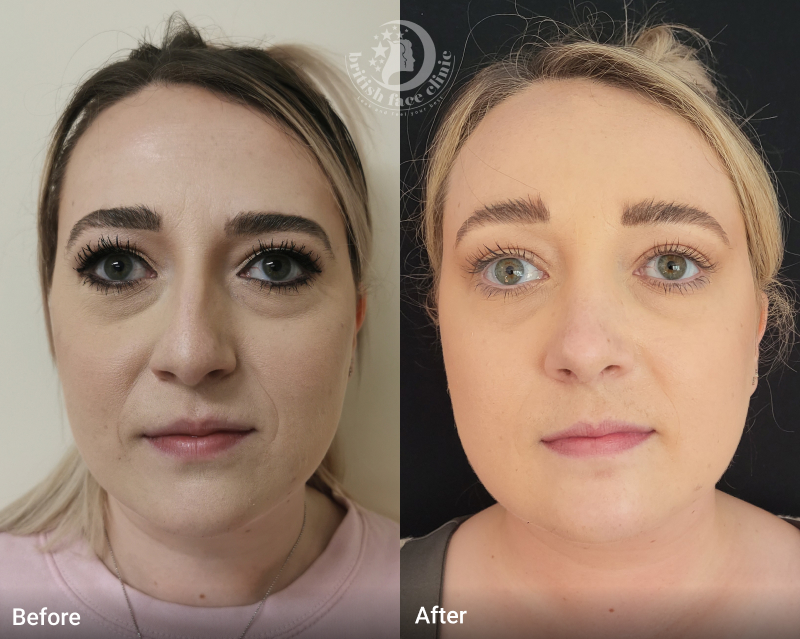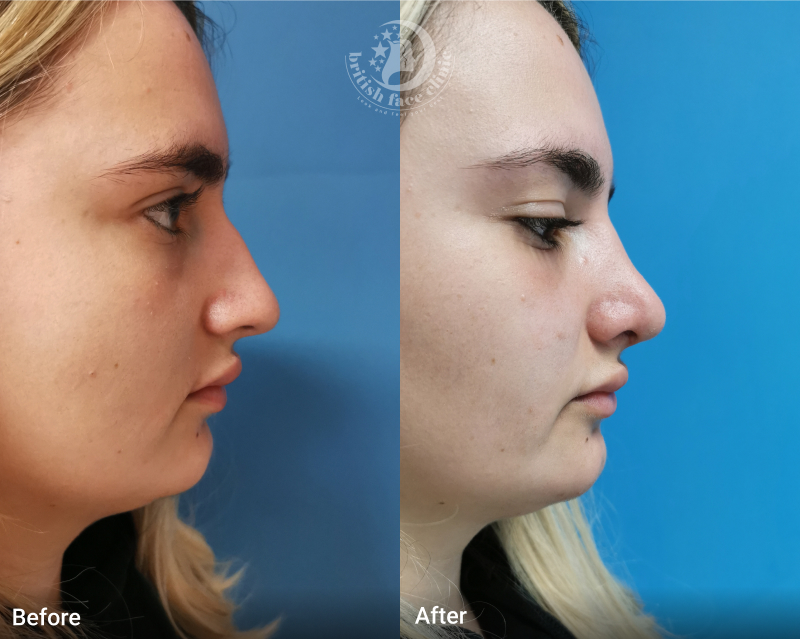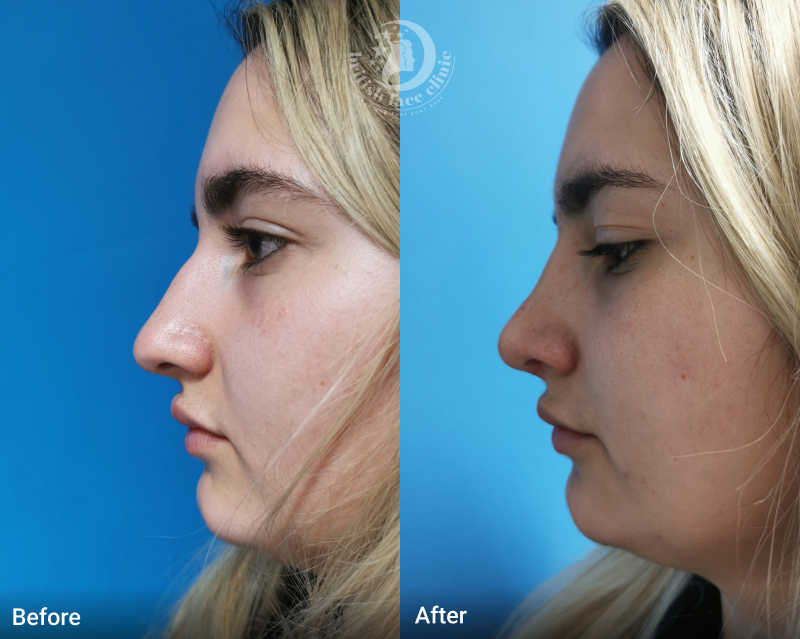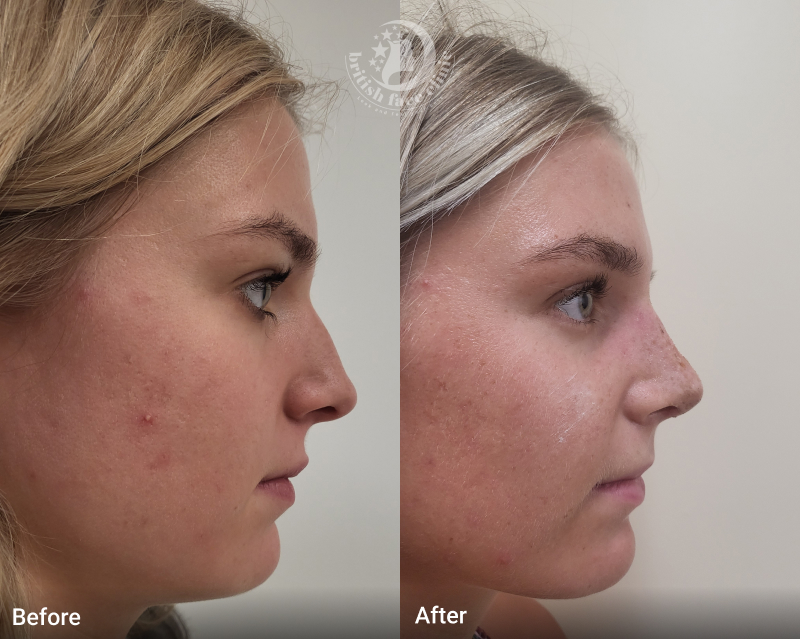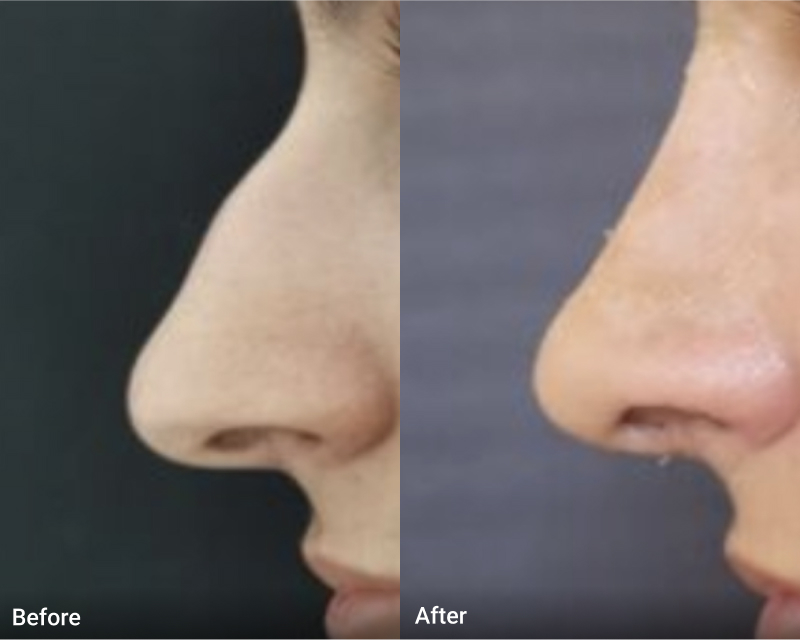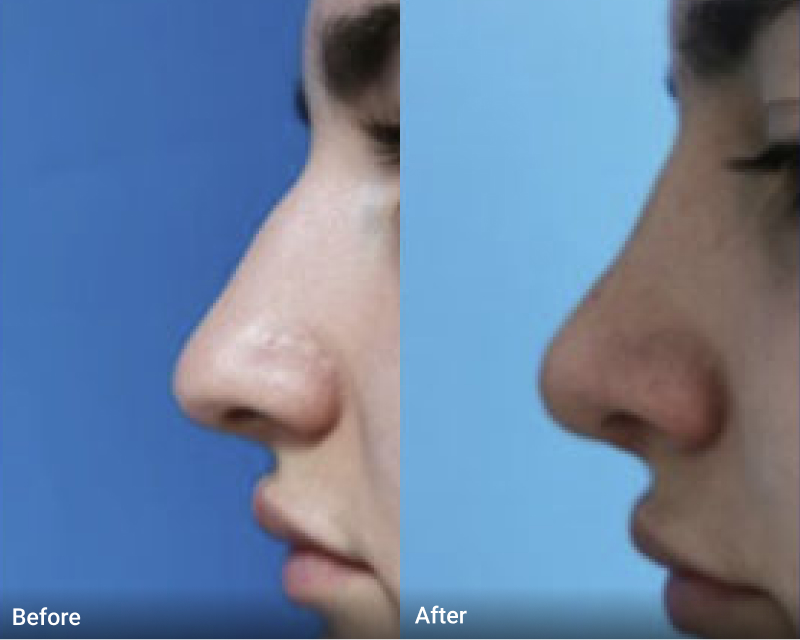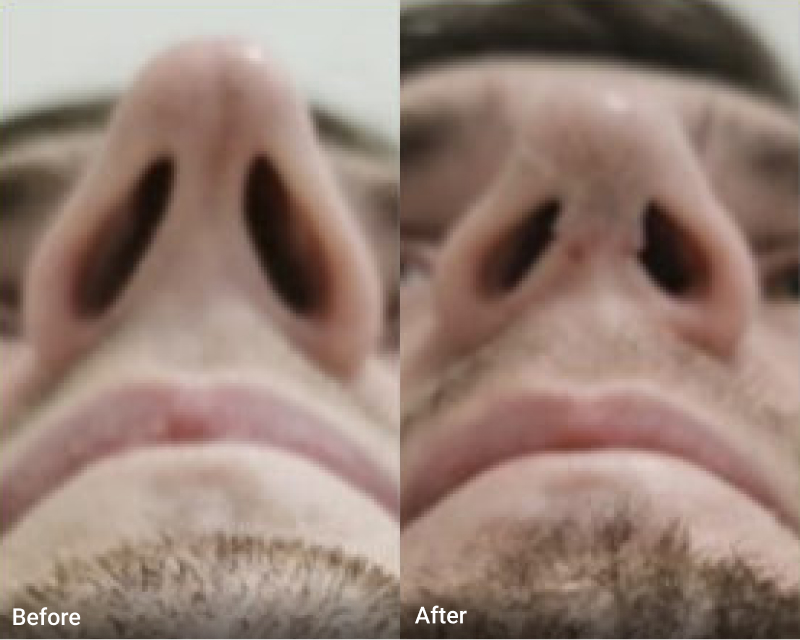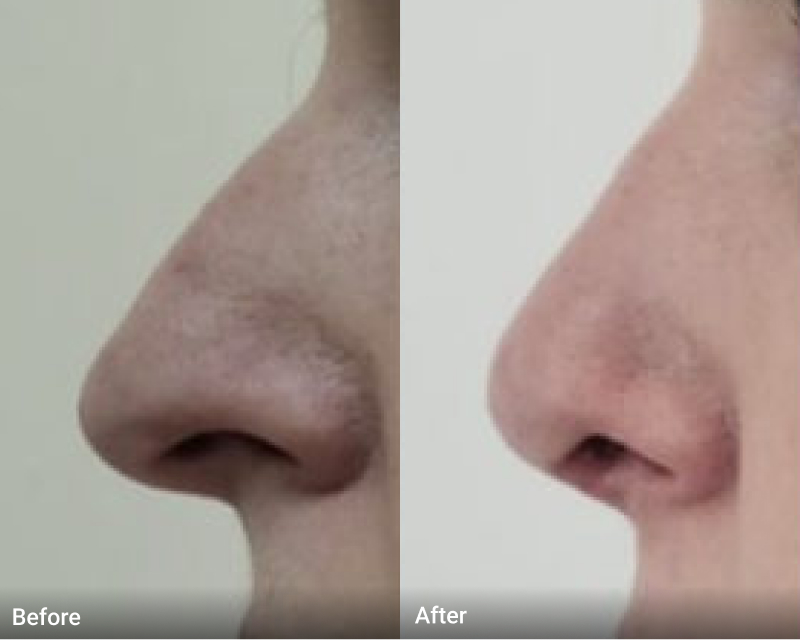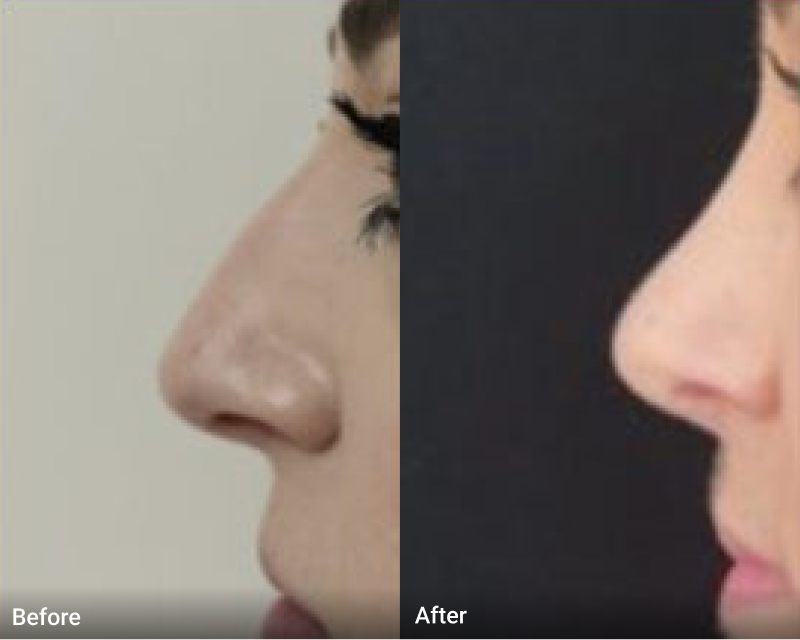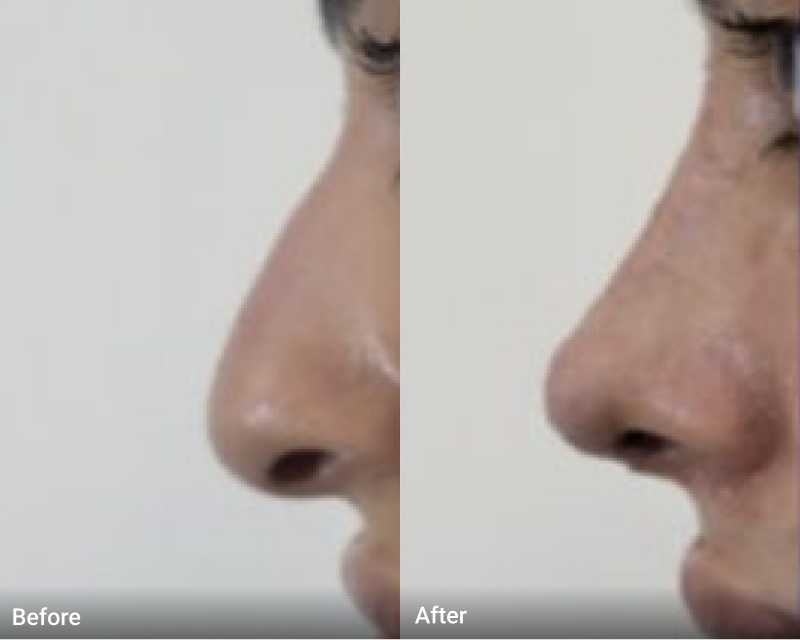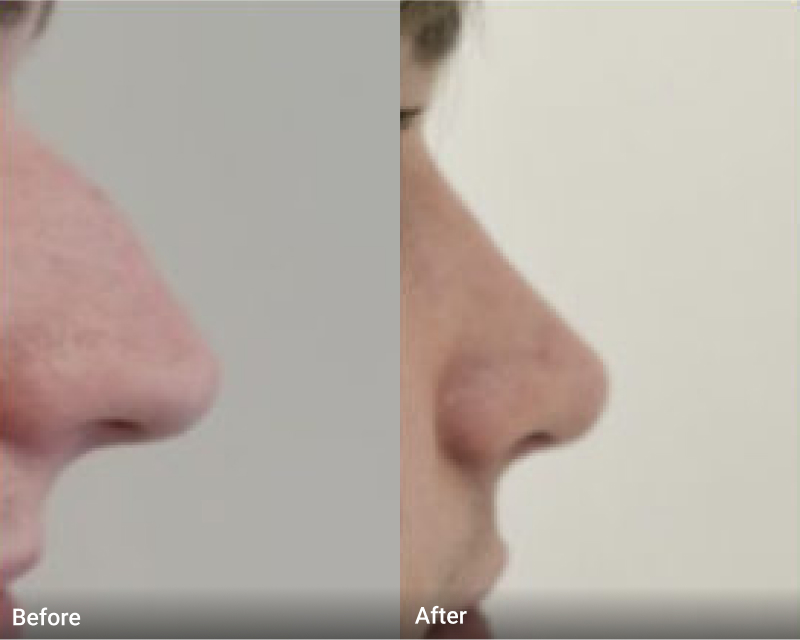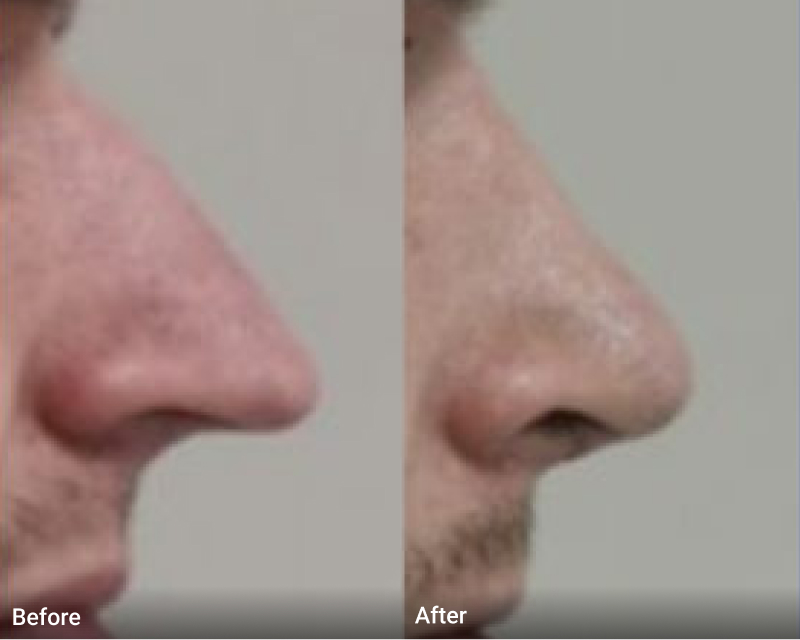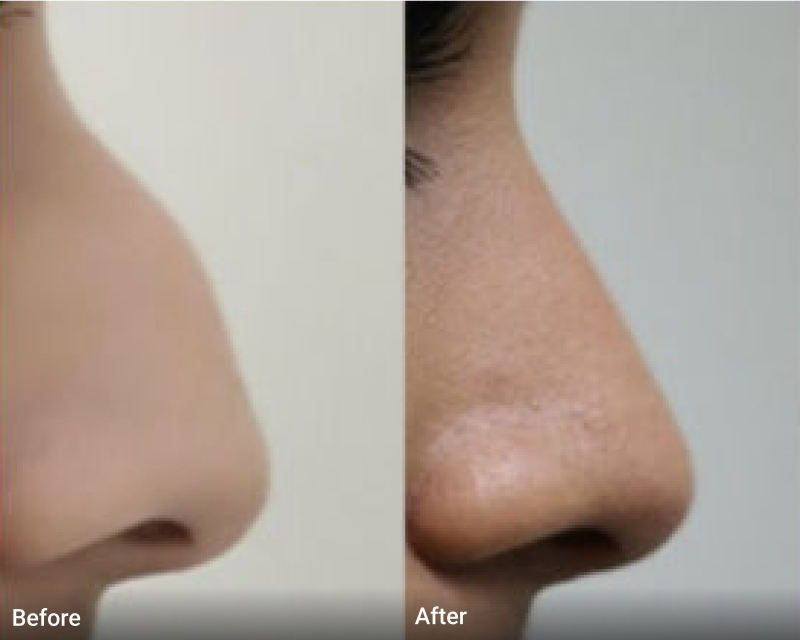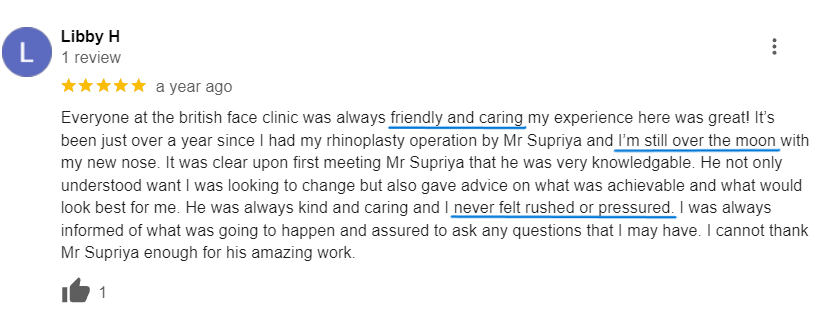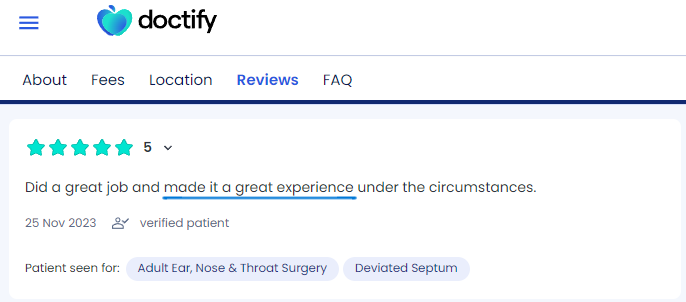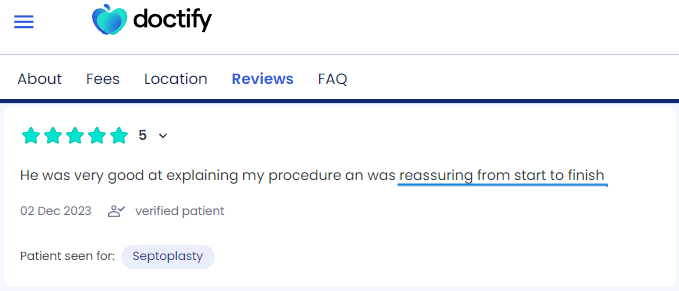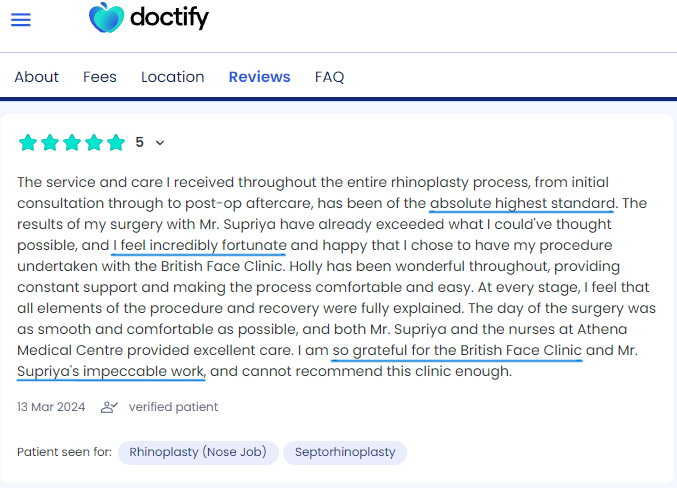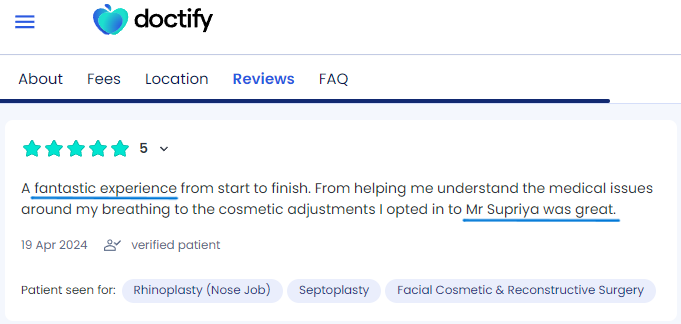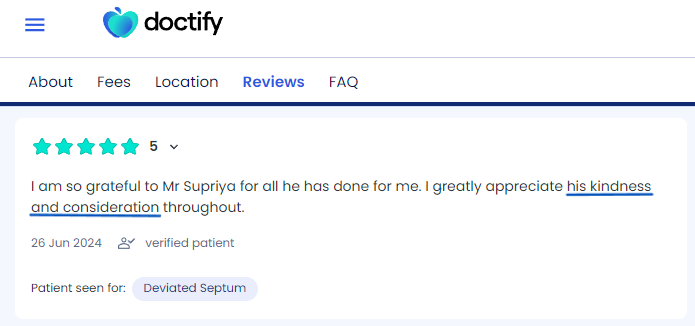Struggling with Your Nose’s Appearance
or Breathing Issues? We Can Help!
Are you self-conscious about your nose’s appearance or experiencing breathing difficulties that affect your quality of life? We understand how these concerns can impact your confidence and well-being. Rhinoplasty surgery can address both cosmetic and functional issues, helping you achieve a beautifully balanced nose and improved breathing.
We offer expert Rhinoplasty in London, Milton Keynes and Northampton, ensuring you have access to top-quality care in a location that suits you best.
Before and After Images of Rhinoplasty
These before and after photos show the effectiveness of the
rhinoplasty performed by Mr Mrinal Supriya and his team.
The above pictures are authentic and unedited photos of Mr Supriya patients.
What Our Patients Have to Say
Anne Shares Her Life-Changing
Experience with Rhinoplasty – Part 1
Anne Shares Her Life-Changing
Experience with Rhinoplasty – Part 2
A Rhinoplasty Patient Reveals Her Experience Before and After the Procedure
A Rhinoplasty Patient Reveals Her Experience Before and After the Procedure
Anne Shares Her Life-Changing
Experience with Rhinoplasty
Anne Shares Her Life-Changing
Experience with Rhinoplasty
What Is Rhinoplasty and
What Can It Do For You?
Rhinoplasty can enhance the appearance and function of your nose, boosting your confidence and alleviating years of self-consciousness. The benefits include:
- Increasing or decreasing the size of the nose
- Reshaping the nostrils
- Refining the nasal tip
- Modifying the nasal bridge
- Enhancing facial symmetry
- Correcting a deviated septum
- Improving breathing
Still have questions? Read our blog : What is Rhinoplasty?
Rhinoplasty at a Glance
Duration
2 – 3 hours
Anaesthesia
General anaesthetic

Hospital Stay
Daycase with no overnight stay

Downtime
2 weeks

Exercise
After 6 weeks
Cost
Consultation £200
Procedure from £6,500

Results
Initial result 3 weeks
Final results up to a year

Wearing glass
After 4 weeks
Duration
2 – 3 hours
Anaesthesia
General anaesthetic

Hospital Stay
Daycase with no overnight stay

Downtime
2 weeks

Exercise
After 6 weeks
Cost
Consultation £200
Procedure from £6,500

Results
Initial result 3 weeks
Final results up to a year

Wearing glass
After 4 weeks
Is Rhinoplasty
Right for You?
You might be an ideal candidate for rhinoplasty surgery if:
- You wish to improve the appearance of your nose
- Trauma or infection has altered your nose’s shape
- Breathing through your nose is obstructed
- Ageing has changed the shape of your nose, such as a drooping tip
- You have a congenital defect corrected at a young age and are now at least 18
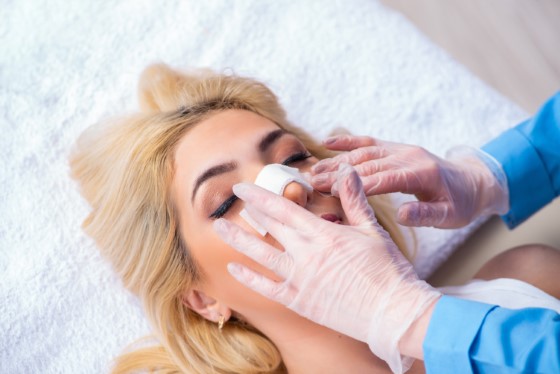
Rhinoplasty London: Our expert aesthetic plastic surgeons provide top-quality care for those seeking to enhance the appearance of their noses.
Consultation
We offer a free initial phone consultation with our specialist team. For the next step, we invite you to an in-person or online consultation with Mr Supriya. Consultations are £200 with Mr Supriya and are deductible from any booked surgery. This fee includes follow-up consultations.
Types of Rhinoplasty
Procedures We Offer
Closed Rhinoplasty
This technique allows for nose reshaping without external incisions, ideal for minor adjustments like removing a hump on the nasal bridge. It results in quicker recovery times and minimal scarring, making it suitable for subtle changes.
Open Rhinoplasty
This method allows for significant changes in shape, size and projection, requiring a small incision that becomes nearly invisible upon healing. It provides the surgeon with greater visibility and access, ideal for more complex adjustments.
Read our blog that explains Open vs Closed Rhinoplasty.
Alar Base Reduction
This procedure reshapes and reduces the size of the nostrils with incisions along the nostril crease, which heal inconspicuously. It balances nostril size with the rest of the nose for a more harmonious appearance.
Open Septorhinoplasty
Combining the correction of a deviated septum with cosmetic changes, this approach improves both breathing and appearance. It addresses both functional and aesthetic concerns simultaneously.
Rhinoplasty Grafts
Cartilage grafts, such as spreader grafts and batten grafts, enhance airflow in vital areas of the nose. These grafts support and reinforce the nasal structure, improving both function and appearance.
Preservation Rhinoplasty
This advanced technique preserves the natural structure of your nose while achieving your desired look. It focuses on maintaining nasal bones and cartilage, ensuring a refined, natural result with less invasive methods.
You may find our blog helpful for more information – What type of nose job is right for you?
Closed Rhinoplasty
This technique allows for nose reshaping without external incisions, ideal for minor adjustments like removing a hump on the nasal bridge. It results in quicker recovery times and minimal scarring, making it suitable for subtle changes.
Open Rhinoplasty
This method allows for significant changes in shape, size and projection, requiring a small incision that becomes nearly invisible upon healing. It provides the surgeon with greater visibility and access, ideal for more complex adjustments.
Read our blog that explains Open vs Closed Rhinoplasty.
Alar Base Reduction
This procedure reshapes and reduces the size of the nostrils with incisions along the nostril crease, which heal inconspicuously. It balances nostril size with the rest of the nose for a more harmonious appearance.
Open Septorhinoplasty
Combining the correction of a deviated septum with cosmetic changes, this approach improves both breathing and appearance. It addresses both functional and aesthetic concerns simultaneously.
Rhinoplasty Grafts
Cartilage grafts, such as spreader grafts and batten grafts, enhance airflow in vital areas of the nose. These grafts support and reinforce the nasal structure, improving both function and appearance.
Preservation Rhinoplasty
This advanced technique preserves the natural structure of your nose while achieving your desired look. It focuses on maintaining nasal bones and cartilage, ensuring a refined, natural result with less invasive methods.
You may find our blog helpful for more information – What type of nose job is right for you?
Patient Stories
It’s embarrassing looking tired at work, and social events aren’t so fun when your confidence and self-esteem are lacking. You’ve neglected yourself and feel inadequate compared to all the beautiful people around you. You deserve some self-love.
Take your first step and step into a more beautiful you!
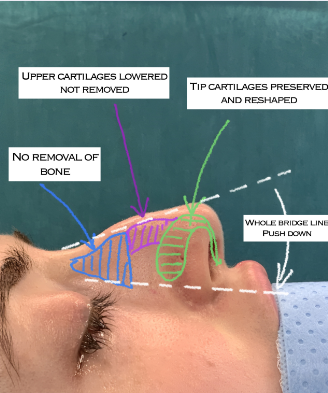
Rhinoplasty London: With advanced techniques, our facial plastic surgeon can achieve natural-looking results tailored to your unique features.
Preserve Beauty and Function with a Preservation Rhinoplasty
Considering nose reshaping surgery for the first time? Preservation rhinoplasty offers superior results with minimal disruption to nasal structures, enhancing both appearance and breathing function.
Refined Natural-Looking Appearance
By preserving key support structures, this procedure maintains a natural look and optimises breathing. The technique aims to enhance your facial features harmoniously, ensuring that the changes look both subtle and effective.
Optimised Recovery
With incisions made on different planes, this method reduces potential damage, promoting faster recovery with fewer complications. Many patients return to normal activities within a week, experiencing less bruising and swelling compared to traditional rhinoplasty procedures. Preservation rhinoplasty ensures a smoother and more comfortable post-operative experience.
What Can We Treat With Rhinoplasty?
Rhinoplasty procedures can address:
- Dorsal hump: A bump on the nasal bridge
- Nasal width: Too wide or too narrow
- Asymmetry: Twisted or deviated nose
- Prominent nasal tip: Disproportionate nasal tip
- Drooping nasal tip: Less than a 90-degree angle with the upper lip
- Post-traumatic deformities: Shape changes after injury
- Nasal airway problems: Issues like internal valve collapse and septal deviation
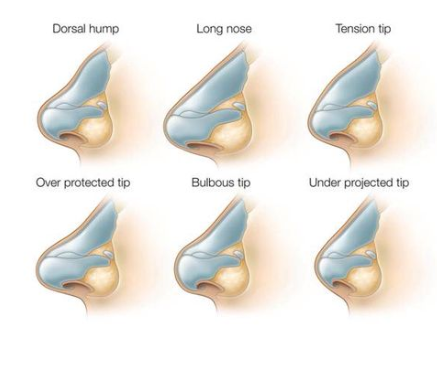
Rhinoplasty Post-Operative Support
Welcome Message from Nidhi,
Director at British Face Clinic
We provide comprehensive support throughout your recovery, including:
- Year-long access to complimentary post-operative consultations
- A take-home post-operative package
- Follow-up care at 1, 2, 6, 9, 12 and 18 months post-procedure
- Access to a dedicated patient care practitioner for personalised support
- Free consultation for other cosmetic surgery procedures
Here’s who you’ll be meeting or talking to during your post-op journey:
- 1 Day After Procedure: Phone call with our practice nurse for a check-in.
- 1-2 Weeks: Appointment with Mr Supriya for cast and dressing removal.
- 3 Months: In-clinic appointment with Mr Supriya.
- 6 Months: In-clinic visit with Mr Supriya or a nurse.
- 9 Months: Phone check-in with Mr Supriya.
- 12 Months: In-clinic appointment with Mr Supriya to celebrate your progress.
Reclaim your youthful face. Reclaim your self-assurance.
Why Mr Mrinal Supriya Is Your
Best Choice for Rhinoplasty
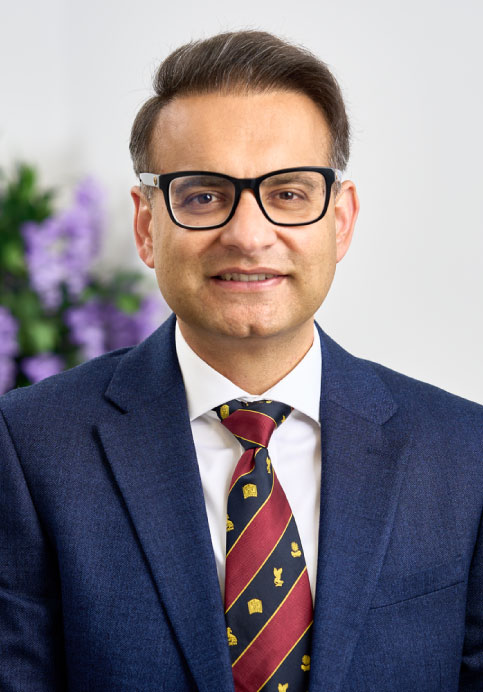
Meet Mr Mrinal Supriya | Facial Cosmetic Surgeon
FRCS (OTOL-HNS), MRCS Ed,
DO-HNS, MS in ENT, MBBS
Mr Mrinal Supriya is the Divisional Director of Surgery. He is highly experienced Head and Neck Surgeon, specialising in facial cosmetic surgery. He is Chief of Surgery Division (2024) and was the Clinical Director for head and neck surgery at Northampton General Hospital.
He leads complex ENT and head and neck services, including facial aesthetics & reconstruction and robotic surgery. Mr Supriya trained globally, including in the UK, Australia and the USA and worked with renowned experts like Dr Andrew Jacono. He is certified by The Royal College of Surgeons to provide facial cosmetic surgery in the UK.
Why Choose British Face Clinic for
Your Rhinoplasty Procedure?
- Focus on natural-looking outcomes and high patient satisfaction
- Benefit from Mr Supriya’s international experience
- Advanced surgical services led by Mr Supriya at a prominent NHS hospital
- Expertise in training Oxford Deanery Trainee Surgeons
- Address both cosmetic and medical issues with comprehensive care
- Exceptionally low revision rates
- Best possible support before, during and after surgery with dedicated team access
How to schedule a consultation
To schedule a consultation to discuss a rhinoplasty procedure, you can either call us on 07590817036, book online via our website, schedule a video consultation or visit us at one of our clinics in London, Milton Keynes, or Northampton.
What to Expect During
Your Consultation
During your consultation, we’ll discuss:
- Your surgical goals
- Medical conditions, drug allergies and medical treatments
- Current medications, vitamins, supplements, alcohol, tobacco and drug use
- Previous surgeries
Our surgeon will:
- Evaluate your general health and risk factors
- Take photographs
- Discuss your surgical options
- Recommend a treatment course
- Discuss likely outcomes and potential complications
- Preview your surgical outcome with Crisalix 3D technology (for selected procedures)
- Discuss the surgery cost and payment options
How Much Does a Rhinoplasty
Cost in London?
Holly, Practice Manager, Explains Why to Choose British Face and What to Expect in the Procedure Cost
Rhinoplasty at British Face Clinic starts from £6,500. Most patients opt for an open septorhinoplasty with septal grafts, costing £8,500. For complex procedures or rib cartilage graft insertion, the cost is higher and an exact quote will be provided after consultation.
- Anaesthetist Fee: Included in the total price package
- Theatre and Hospital Stay: Included in the total price package, along with medication provided at discharge
- Surgical Fee: Includes the surgeon’s fee and initial post-operative follow-up appointment. Any additional surgical services required due to emergencies or complications are also included.
If you need more information about the cost, read our blog – How much does rhinoplasty cost?
Accessible Payment
Plans Now Available
We make your procedure more accessible by offering flexible payment plans with 0% interest for the first 12 months!
It takes less than a minute to fill in the form and receive a response. Rhinoplasty has never been so accessible!
0% financing available

Change Your Life Today
The rejuvenate face of your dreams is just a free phone consultation away.
You can get the youthful and confident look you always desired.
Frequently Asked Questions
Is a Rhinoplasty Painful?
During the surgical procedure, you will be asleep under a general anaesthetic. Mild to moderate pain can be experienced during nose job recovery, however, painkillers will be prescribed to ease any discomfort. Your plastic surgeon will ensure you are comfortable throughout the recovery process.
How Long Does a Rhinoplasty Surgery Last?
A typical rhinoplasty surgery lasts between 2 to 3 hours, depending on the complexity of the case. More extensive procedures, such as an open rhinoplasty or surgeries involving nasal cartilage grafting, may take longer.
Is Rhinoplasty a Major Surgery?
Yes, rhinoplasty is considered a major surgical procedure. It involves detailed reshaping of the nasal bones and cartilage, requiring the expertise of skilled rhinoplasty surgeons to achieve the desired outcome safely.
How Long Does It Take to Recover from Rhinoplasty Surgery?
Initial recovery from a rhinoplasty operation usually takes about 1 to 2 weeks, with most patients returning to work and normal activities after this period. Complete healing and final results can take up to a year as the nasal tissues settle and swelling subsides.
Who Is Not a Good Candidate for Rhinoplasty?
Individuals with certain health conditions, poor overall health, or unrealistic expectations may not be suitable candidates for rhinoplasty. A detailed medical history and consultation with an aesthetic plastic surgeon are essential to determine eligibility. British Face Clinic will also only treat patients over 18 years of age.
How Is Rhinoplasty Different from Septoplasty?
Rhinoplasty focuses on improving the nose’s appearance and function, while septoplasty specifically addresses the correction of a deviated septum to improve breathing. Septoplasty may be performed as part of a rhinoplasty procedure if both aesthetic and functional issues need to be addressed.
Will I Need to Stay in the Hospital?
Rhinoplasty is typically an outpatient procedure, meaning you can go home the same day. However, you will not be able to drive and it is recommended to have someone with you for 24 hours following a general anaesthetic.
Does Insurance Pay for a Rhinoplasty?
Insurance usually does not cover rhinoplasty if it is performed solely for cosmetic reasons. However, if the rhinoplasty procedure includes the correction of functional issues such as a deviated septum, part of the cost may be covered. Check with your insurance provider for specific coverage details.
How Much Does Rhinoplasty Cost?
Rhinoplasty with British Face Clinic costs from £7,500. The majority of our patients undergo an Open Rhinoplasty which costs £8,500. If a patient requires a complex procedure or insertion of a silicon graft the cost can be higher and an exact quote would be given following consultation.
What Is the Most Appropriate Age for a Cosmetic Rhinoplasty?
Studies suggest that a minimum age of 18 years is preferred to perform Rhinoplasty as the bony structures of the face are near completion and will not change much after this age.
Will I Be Asleep During Surgery? Do I Need to Stay in the Hospital?
Yes, rhinoplasty is performed under general anaesthesia, so you will be asleep during the surgery. Most patients do not need to stay in the hospital overnight unless the procedure is particularly extensive or done later during the day, in which case you may need to stay overnight.
Will I Have an Outside Cast, Inside Foil Splints and Inside Packing After Nose Surgery (Rhinoplasty)?
At the end of the procedure, we would typically place small strips of adhesive tape over your nose and put a cast on these strips. You should leave the cast in place for at least 7 to 12 days after the surgery. Mr Supriya does not usually place packing in the nostrils.
Will Sutures Be Removed After Nose Surgery (Rhinoplasty)?
If you undergo an Open Rhinoplasty, we place sutures on the skin between your nostrils. They would be removed 5 to 10 days after surgery and the incisions closed inside the nose with absorbable material that doesn’t need to be removed.
How Long Will I Need to Take Off Work and Sport Following Surgery of the Nose (Rhinoplasty)?
You should plan to take at least 1 to 2 weeks off work to allow for initial recovery. For sports and other strenuous activities, you should wait at least 6 weeks to prevent any complications or injury to the healing nasal structures. You should avoid contact sports for at least one year.
Can I Wear Glasses After Nose Surgery (Rhinoplasty)?
It is advisable to avoid wearing glasses for at least 4 weeks after surgery to prevent pressure on the nasal bridge. Alternatives like contact lenses or using a special support for glasses can be discussed with your surgeon.
Can I Sunbathe After Nose Surgery (Rhinoplasty)?
It is advisable to minimise sun exposure during the first year after Rhinoplasty surgery, especially during the noon hours as it can cause swelling and affect the healing process. Use sun protection and wear a hat if you need to be outside.
May I Visit the Sauna or Steam Bath After Nose Surgery (Rhinoplasty)?
It is recommended to avoid saunas and steam baths for at least 3 months post-surgery. The heat and humidity can increase swelling and complicate the healing process.
Is Nose Surgery (Rhinoplasty) Painful and Do I Need Pain Medication?
There will be some discomfort following rhinoplasty, but it is typically manageable with prescribed pain medication. Most patients find the pain subsides significantly after the first few days, making the overall recovery process more comfortable. You should not experience any severe pain and if you do, you should visit your doctor as soon as possible.
How Does Non-Surgical Rhinoplasty Differ from Surgical Rhinoplasty?
Non-surgical rhinoplasty uses dermal fillers to reshape the nose without incisions or anaesthesia, offering immediate but temporary results. In contrast, surgical rhinoplasty involves altering the nasal bones and cartilage through surgery for permanent changes.
Our Locations
- London City
The Wellington Hospital, 15 – 17 Lodge Road
London NW8 7JA
- London City
98 Harley Street
London, W1G 7HZ
- Milton Keynes
Athena Surgical Centre
16 Davy Avenue, Knowlhill
Milton Keynes, MK5 8PL
- Northampton
The Three Shires Hospital
The Avenue
Northampton. NN1 5DR
London City
The Wellington Hospital
15 – 17 Lodge Road
London NW8 7JA
London City
98 Harley Street
London, W1G 7HZ
Milton Keynes
Athena Surgical Centre
16 Davy Avenue, Knowlhill
Milton Keynes, MK5 8PL
Northampton
The Three Shires Hospital
The Avenue
Northampton. NN1 5DR





















